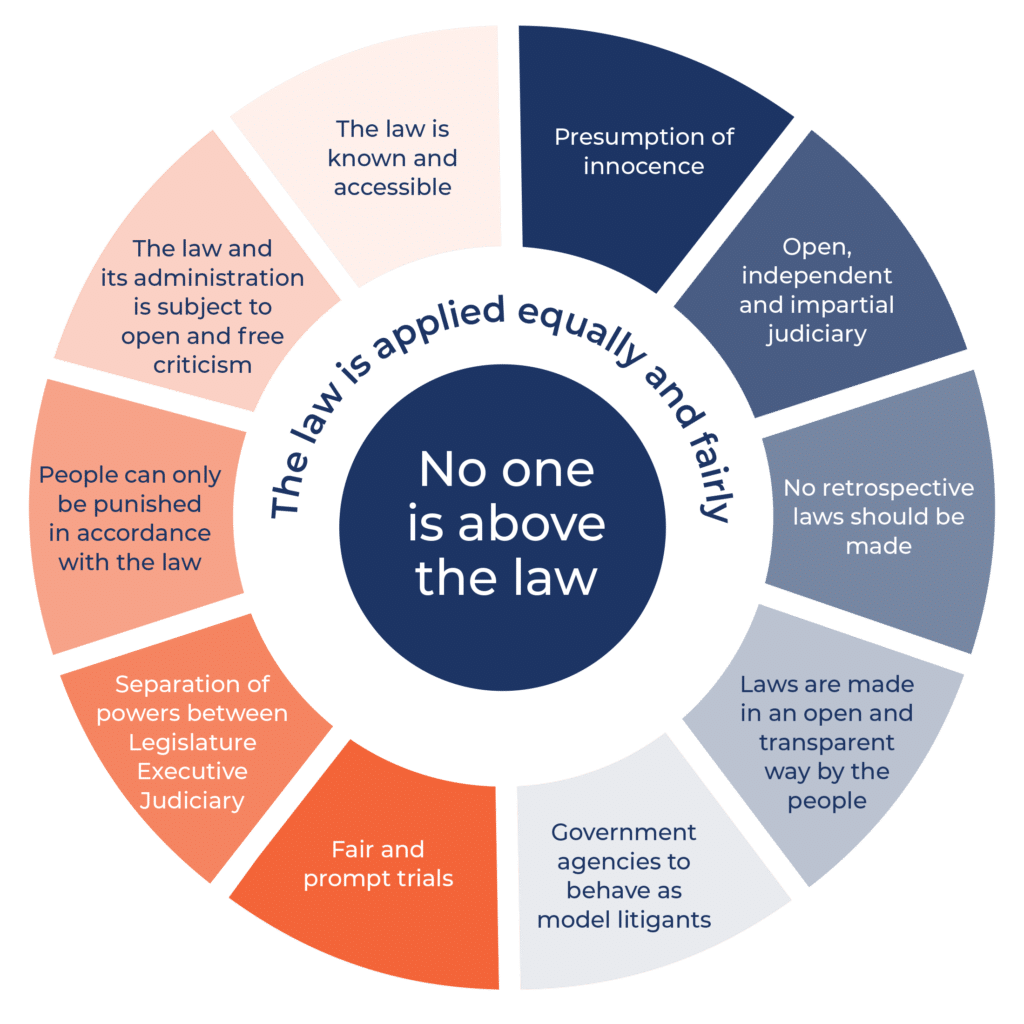Last week, the Queensland Parliament’s Agriculture and Environment Committee tabled its report into the Vegetation Management (Reinstatement) and Other Legislation Amendment Bill 2016.
The Bill contains important and controversial changes to the state’s vegetation management legislation, and formed a major electoral promise of the incoming Palaszczuk Labor government.
These changes involve key rule of law debates, including when it is acceptable to reverse the onus of proof, the importance of law reform vs. stability of law, and making legislation retrospective.
Reversing the onus of proof
One of the most controversial parts of the Bill is clause 6, which would insert a new section 67A into the Vegetation Management Act 1999 (Qld). This new section would provide that:
The clearing of vegetation on land in contravention of a vegetation clearing provision is taken to have been done by the occupier of the land in the absence of evidence to the contrary.
In effect, this would reverse the onus of proof, presuming the landholder to be criminally liable unless they could prove their innocence. Unsurprisingly, the clause has caused widespread dismay.
The Committee noted the concern, but also noted the Government’s justifications for reversing the onus, including:
A lack of available evidence due to clearing occurring in remote areas; the improbability of clearing by a third party due to the associated costs; and the landholder’s ability to provide evidence to prove their innocence.
The Queensland Department of Natural Resources and Mines also argued that:
The proposal to reinstate the reverse onus of proof is not simply to make prosecutions easier, or for administrative convenience, but is necessary in the circumstances where there is no conclusive evidence of who undertook the clearing on the landholder’s property. Satellite imagery may establish that clearing has taken place, but not necessarily who undertook the clearing.
Despite these arguments, the Committee considered that:
On balance, the provision at clause 6 of the Bill which reverses the onus of proof in relation to potentially unlawful clearing does not have sufficient regard to the rights and liberties of landholders.
The committee, therefore, recommends that the provision be omitted from the Bill.
Stability of law
In his formal Statement of Reservation appended to the Committee’s Report, Qld LNP member Tony Perrett pointed out that the proposed amendments in the Bill represented:
The 18th time that the vegetation management framework has been amended since the introduction of the Vegetation Management Act 1999.
Mr Perrett, as well as other stakeholders, raised concerns about this lack of stability, and its detrimental impact on Queensland farmers.
This highlights another key debate about the rule of law: law reform always undermines the stability of laws, because it involves change. When does this instability become such a problem that the law reform itself is detrimental?
As Rachel Belton has pointed out that:
Depending on how they are implemented, institutional reforms carried out under the banner of rule-of-law reform can actually undermine rule-of-law ends. For instance, in Romania, businessmen have pleaded for an end to legal reform: They can live with bad laws, but the constant “improvements” of key property laws by various bilateral and multilateral aid agencies creates an unpredictable legal environment. An end good of the rule of law – a stable, predictable legal system – has been undermined by the so-called reform process.
Although the situations are not exactly parallel, the constant tinkering with Queensland’s vegetation management laws has raised concerns that those facing the brunt of the laws – predominantly farmers – are unable to plan beyond the electoral cycle. Regardless of the merit of the amendments, the instability itself becomes a rule of law issue.
Retrospectivity
The third key issue raised by the Committee in its report is the potentially retrospective impact of the amendments. Certain of the Bill’s provisions would, if passed into legislation, be backdated to commence on 17 March 2016, the day the Bill was introduced into Queensland Parliament.
The Committee noted Queensland’s Legislative Standards Act 1992, section 4(3)(g) of which says that legislation should not:
adversely affect rights and liberties, or impose obligations, retrospectively.
The Committee said that a:
Strong argument is required to justify an adverse effect on rights and liberties, or imposition of obligations, retrospectively.
Again, the Department of Natural Resources and Mines set out the argument for retrospective commencement:
The risk of pre-emptive clearing and applications has been demonstrated in 1999 and in 2009.
The Vegetation Management Bill 1999 was introduced into Parliament in December 1999 but not debated and passed until September 2000. The Statewide Landcover and Trees Study (SLATS) reported clearing rates for the 1997-1999 periods (prior to the introduction of the Bill) were 425,350 hectares per year. Clearing rates during the 1999-2000 period increased to 757,790 hectares per year then reduced to 380,160 hectares per year during 2000-2001.
Previous amendments to the vegetation management framework have shown that any suggestion of change to the framework sees pre-emptive clearing…before the law changes… Should this occur, achieving the Government’s commitment would be less effective because the extent of vegetation the Reinstatement Bill moves to protect would be reduced.
On this issue, the Committee split along party lines.
Government members “considered that the provisions were necessary to deter what some submitters have referred to as panic clearing while the Bill is being considered by Parliament”, while non-government members considered that “the amendments breach the fundamental legislative principles, as they would adversely impact on the rights and liberties of landholders” and “would create uncertainty for landholders and put on hold their plans for future development”.
Law reform and the rule of law
The ongoing debates over vegetation management in Queensland highlight an important issue of contemporary law reform. Environmental concerns, financial and economic concerns, and rule of law concerns must all be weighed in this debate.
While law reform is often an important battle, Rachel Belton reminds us that constant legal change can also have an injurious effect. The current parliament in Queensland will have to deal with those concerns, as well as concerns over the retrospectivity of the proposed legislation, and whether it is acceptable to reverse the onus of proof for certain clearing offences.
— William Shrubb
Further reading
‘Report on the Vegetation Management (Reinstatement) and Other Legislation Amendment Bill 2016‘, Queensland Parliament Agriculture and Environment Committee
‘Vegetation Management (Reinstatement) and Other Legislation Amendment Bill 2016‘, Queensland Parliament
‘New vegetation management laws currently before Parliament‘, Department of Natural Resources and Mines



